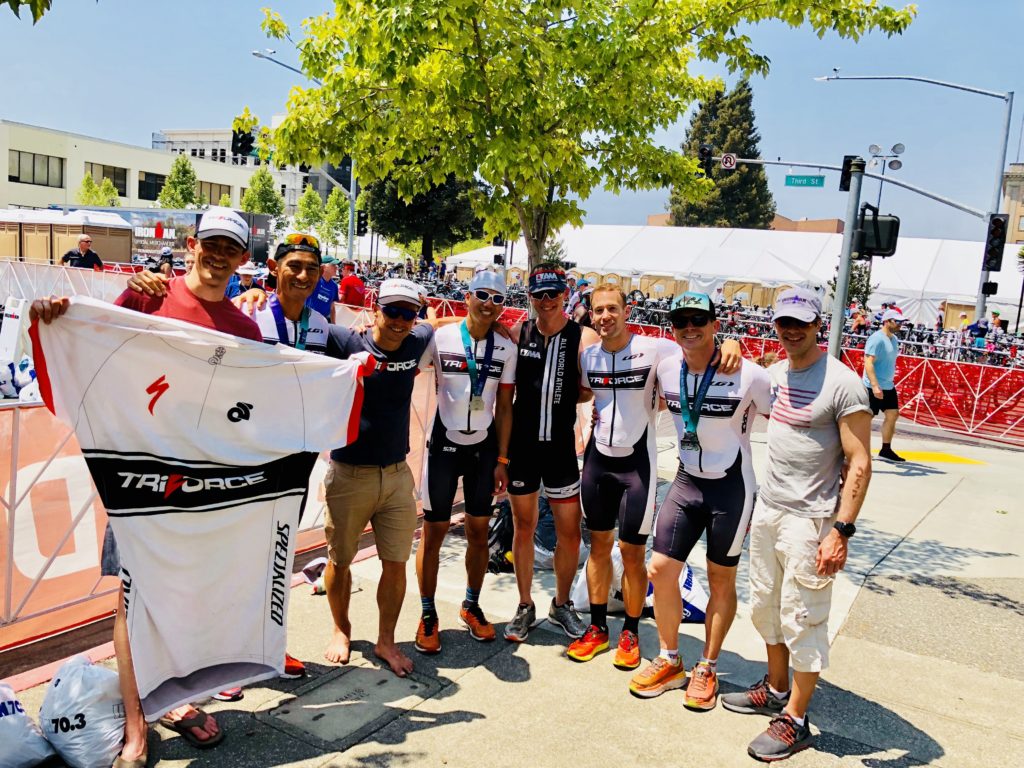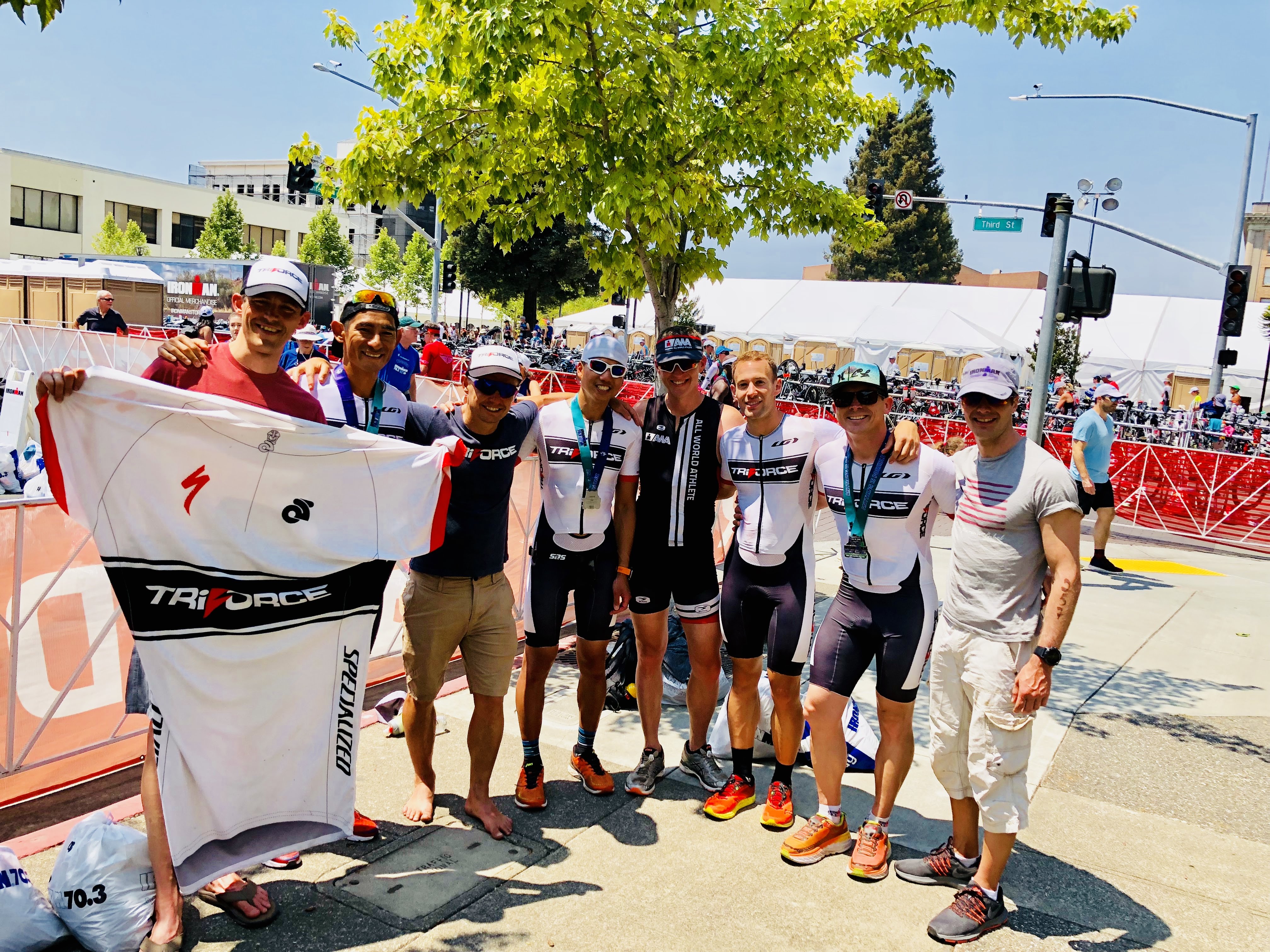
Why is it so confusing for a triathlete to know what to eat? Diet is an area so full of fads and pseudoscience that it’s hard to know what’s true and what is nonsense. Will “superfoods” give us a faster Ironman time? What foods should we avoid? Almost all carbs? Gluten (will it give you a leaky gut?)? Sugar? Saturated fats? Tomatoes (oh, no! they are nightshades!) Beans (uh, oh, they have lectins!). Coffee? (at one point it was bad, now it’s good again?) Write down what you believe about nutrition today and have someone mail it to you 5 years from now– there’s a good chance you might believe the opposite.
I’ve been coaching triathletes for over a decade now and I’ve been following fads in diet going back to the book “Eat to Win” in the 80s (low fat high carb) and here’s what I have concluded. Don’t worry about the latest fads. A diet is good for a triathlete if:
(1) you have high energy levels throughout the day;
(2) you recover well from workouts and perform well in workouts;
(3) it’s easy to follow- you don’t need to be a hermit, avoid restaurants or spend half of your day preparing special foods. Furthermore, the diet should satisfy you and you shouldn’t feel hungry ; and finally
(4) it will allow you to gradually get down to a good racing weight over time.
Just keep it simple and focus on feeling good and performing well. Don’t worry about the latest fads and nonsense. Follow the 3 rules below and I think you’ll find you are checking all the boxes.
Pro tip from a coach with fatty tendencies: the problem with elaborate diets is that you are either “on” the diet (which will cause weight loss) or you are “off the diet”- which usually results in weight gain. Instead, focus on (mostly) following some basic rules that are easy and sustainable for a lifetime.
Here are 3 key basic rules that work:

Rule one is simple and easy. Eat REAL food, close to how it is found in nature. Potatoes, fruits, veggies, beans, meats, whole fat dairy are all real foods. Pretzels, potato chips, crackers, pizza, and most breads are not real foods. Many packaged (fake) foods are literally addictive and if you transition to 100% real food you’ll find that your cravings will go away.
I have a simple rule to help me decide what is “real”– I avoid refined sugar, flour and packaged snacks. And if you want to give up gluten or dairy, that’s fine. Just eat other real foods. Where you draw the line is up to you (e.g. I will eat Ezekiel sprouted grain bread and oats), but if you can eat virtually 100% “real food” you are half the way to a healthy diet.
On the other hand, remember that we are athletes and we need plenty of food. So, if no “real food” is available, then just choose your best option. Better to eat junk food than no food if your training is at a solid level.
(Pro tip from a coach with fatty tendencies: Go especially heavy on the veggies if you have a big appetite. Brussels sprouts are particularly satisfying. And eat plenty of fat– fat is an essential nutrient )
Our last 2 rules apply to meal TIMING.

Rule #2: Eat a solid meal shortly after training. If you eat quickly after training your body will be like a sponge soaking up all the nutrition and using it to rebulid and refuel. (You should also be fueling DURING many workouts, but that’s a separate topic). Don’t be too focused on limiting carbs– we need carbs. Like fat and protein carbs are an essential nutrient. if you are getting your carbs from “real food” sources and timing your meals correctly, you won’t get fat.
Legendary coaching Brett Sutton told me that he’s in favor of a simple diet plan– TRAIN, EAT, TRAIN, EAT, TRAIN, EAT. 3 workouts per day, each followed by a meal. His athletes are lean and more importantly STRONG.
A huge mistake I see is people not eating enough after workouts (and during workouts). It might not cause any immediate problems, but they are gradually draining down their fuel tank over many days and their body either (a) needs to binge (and gain fat) once their tank is empty; or (b) the body goes into conservation mode and you can’t train or recover well.
Or… they don’t eat enough after workouts during the day then they binge on junk food at night. Which brings us to TF rule #3…
Pro Tip from a coach with fatty tendencies: prep your food before training so you can eat quickly after a workout. Wash and cut things up and have them ready to go. One of my favorite post workout meal side dishes is sweet potato fries in the air fryer (which is basically just sweet potatoes with a little bit of avocado oil). I’ll often chop and halfway cook the fries before my workout so I can be eating quickly post workout.

Rule #3: avoid nighttime snacking. We are athletes and need to eat PLENTY of food / calories when we are training. But we often don’t take in enough during the day or during and after workouts, so our bodies compensate by making us hungry at night. If we follow rule #2 and eat after training, our bodies will soak up the nutrients and use them well to rebuild and refuel. But if we eat before bedtime, many of us might find those calories are adding to our waistline instead of our performance (especially since many of us are drawn to sugar, flour and packaged snacks at night as opposed to satisfying real foods).
Pro tip from a coach with fatty tendencies: eat more at dinner (especially veggies) to make sure you aren’t hungry at night. I have a long history of nighttime junk food eating that goes back to childhood. It can be a rough couple of days of withdrawal not snacking at night, but it doesn’t take long to get used to it.
There you have it– keep it simple and follow the 3 rules above and I suspect you will be feeling great, performing and recovering well and you’ll gradually gravitate to your strongest racing weight. It doesn’t need to be complicated!
Many of the the best coaches in the world keep it simple and focus on nailing the basics. It works with pro triathletes and works even better with amateurs. That’s what we believe here at TriForce. If you are interested in joining the Force, to train for your triathlon, Ironman or 70.3 race , read the FAQ page and contact us.

